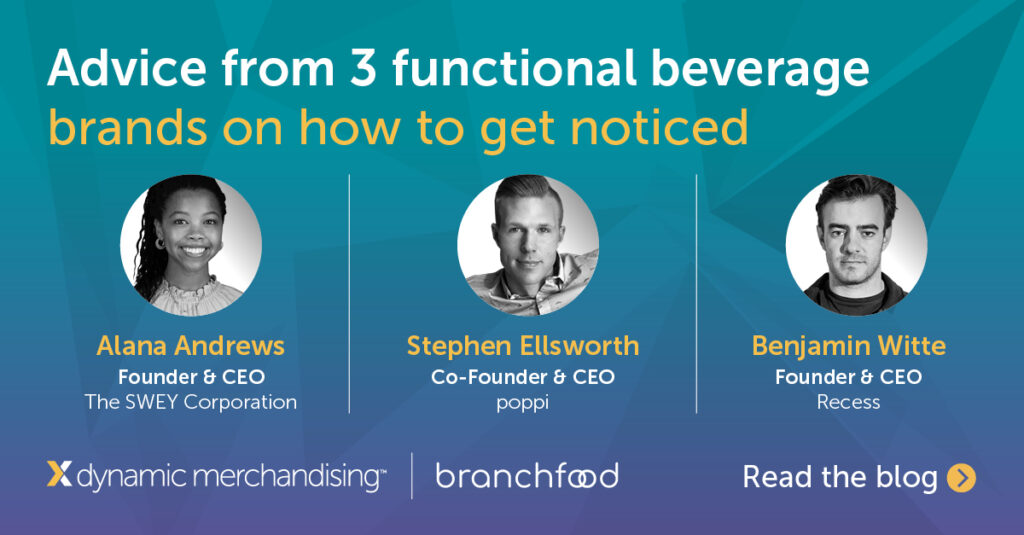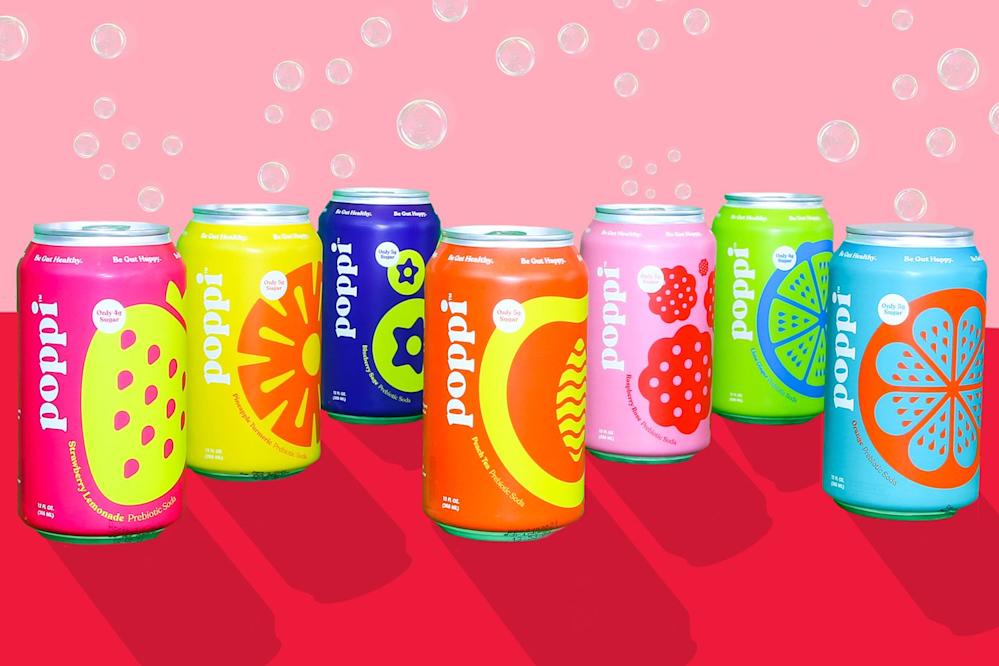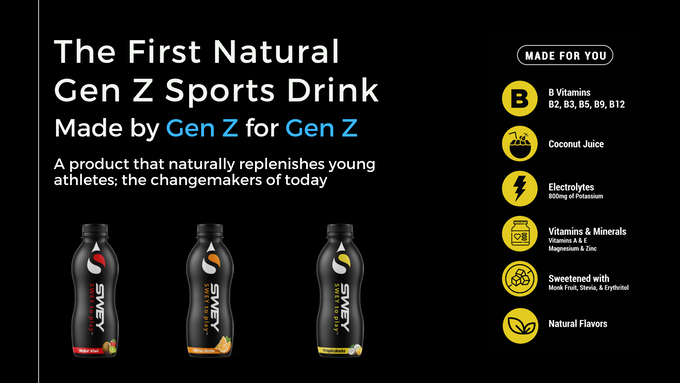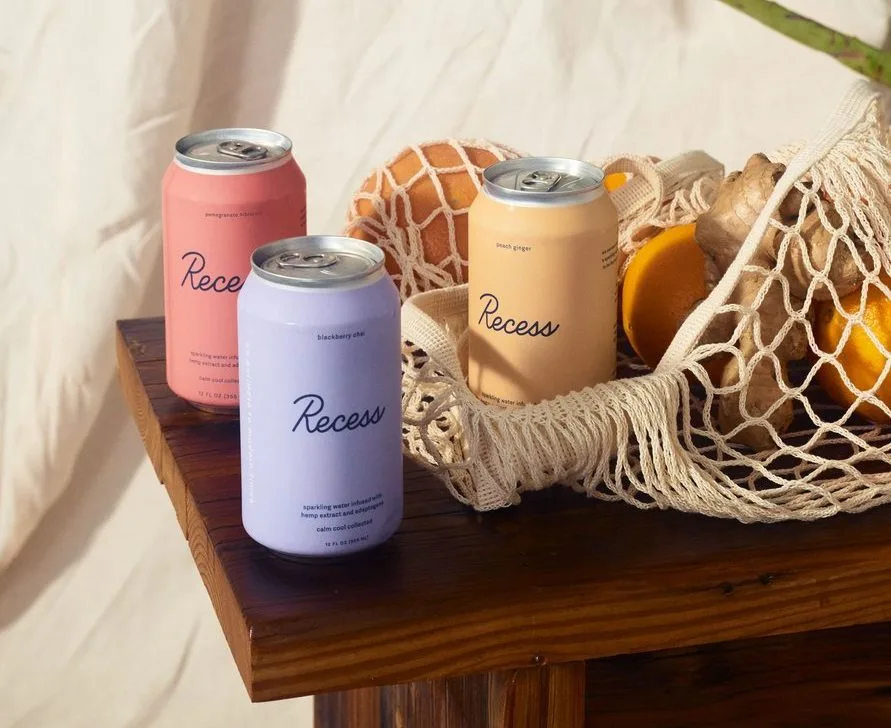Advice from 3 functional beverage brands on how to get noticed

As part of our webinar series in collaboration with Branchfood, we sat with three founders to explain how functional beverage brands get noticed, earn shelf space and build a loyal customer base. Watch the full conversation or find out more about Trax Dynamic Merchandising for emerging brands.
Getting attention as a new brand is always challenging. Recent developments, from less foot traffic and increased popularity of e-commerce due to the pandemic, mean companies need a smarter strategy than ever when it comes to in-store retail. Three particular functional beverage brands have successfully carved out their market both on the shelf and online. Here is some priceless advice that guided them to success.
In-store or online, packaging still matters

Founders of the prebiotic apple cider vinegar-based drink poppi found that packaging is still instrumental in people’s decision making. The bright, colorful packaging mattered, signaling to the consumer, as poppi co-founder Stephen Ellsworth shared, that it is a premium product. In today’s marketplace, “premium” means clean ingredients, high functionality and other aspects worth paying for. In fact, the entire packaging for poppi is meant to represent flavor over functionality. First and foremost, it tastes good, and in addition, it also has all the health benefits traditionally associated with apple cider vinegar.
Meanwhile, cannabidiol-based (CBD) drink Recess and the Gen-Z sports drink SWEY leaned into packaging, too, even though both notably launched as direct-to-consumer (D2C) online beverages. Recess included its brand story on the side of its package – a wise move considering that CBD-based beverages are still an up-and-coming drink category. The youth-focused SWEY went for a strong, sleek sleeve that encompasses being “bold, innovative and inclusive”.

Aisle endcaps, register shelves and other prime in-store locations still rule, which makes the packaging for poppi, Recess and SWEY essential as all three scale deeper into traditional stores.
In the digital age, organic growth is stronger than ever
Recess CEO and founder Benjamin Witte discovered that “earned media”, or media attention based on the actions of fans, is more powerful than big budget advertising or celebrity endorsements. Fans began regularly tagging Recess in their social media posts as they drank it – a testament to the company’s packaging as well as its outreach. Witte says social media posts with the Recess drink in hand is where the brand has gained momentum and velocity. It also reflects the power of word of mouth, as sometimes popularity can just as easily be measured anecdotally as it can be with traditional data sets.

Apple-cider based poppi took a similar path, recognizing early on that sales really were a 360-degree omnichannel play. Digital fuels offline, offline builds sales, and so on. The bright packaging again helped out tremendously, as social media-conscious consumers would coordinate their outfits based on the color of the poppi flavor they were drinking. Co-founder Ellsworth says poppi is positioned as the opposite of kombucha. Unlike the trendy fermented tea that pushes health over taste, poppi puts functionality second to flavor. The smart positioning allowed the previously unknown apple cider vinegar drink to position itself as a tastier alternative to kombucha.
SWEY CEO and founder Alana Andrews learned that the best way to tap into her Gen-Z market was to allow them to be a part of the discovery process – through taste tests. The younger generation wants to have a stronger say in how their favorite products evolve, and SWEY’s in-person events focused on schools, sports centers and other high-traffic areas helped the brand spread organically.
The symbiotic relationship between in-store and online, as well as from social media to in-person gatherings, not only represent the path successful new beverages are taking today, but also the hybrid blueprint other retail leaders may take in the future.



